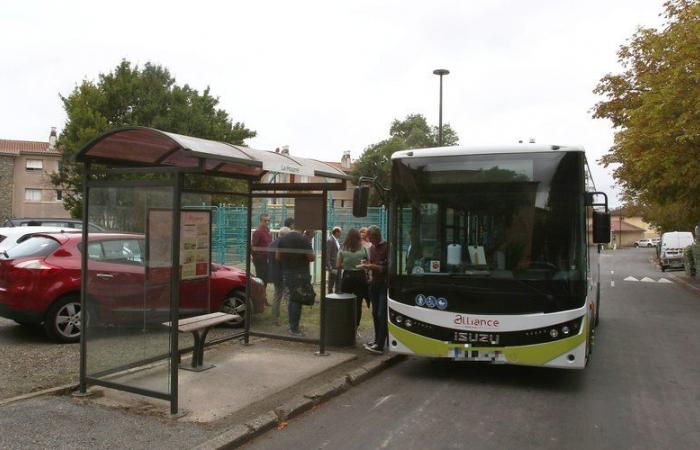the essential
Gers, Lot and Lozère are the worst-off departments in France in terms of accessibility to public transport, according to a study by UFC-Que Choisir.
This is news that should not surprise elected officials and residents of rural areas, and particularly those in the Occitanie region. Gers, Lot and Lozère are at the top of the worst-off departments in terms of accessibility to public transport, according to a study published this Tuesday by UFC-Que Choisir. In these three areas, more than 60% of the population does not have a public transport stop within a ten-minute walk of their home.
ud83dude97More than 10 million French people have no alternative to the car, and in certain rural areas more than 60% of the population does not have access to public transport! L'@UFCquechoisir launches a national awareness and mobilization campaign to… pic.twitter.com/vnGhxxGkcs
— UFC-Que Choisir (@UFCquechoisir) https://twitter.com/UFCquechoisir/status/1861350536609435908?ref_src=twsrc%5Etfw
Conversely, in Ile-de-France, more than 90% of people can walk, in less than ten minutes, from their home to a bus, tram, metro or train station. In Haute-Garonne, this rate rises to more than 80%.
The absence of a bus stop or train station is glaring in small towns
At the national level,'according to the association, “around 17% of the metropolitan population […] has no access to public transportation within a ten-minute walk.” The absence of a bus stop or train station is particularly glaring in small towns since almost half (45%) of towns with less than 1,000 inhabitants are completely deprived of them.
The consumer association also studied the presence of rail transport (train, metro, tramway) in the immediate environment. “According to our study, 85.3% of the French population does not have a train station within a ten-minute walk,” notes UFC-Que Choisir. This is even more true in Gers, where only four stations are today served (Auch, Aubiet, Gimont and L'Isle-Jourdain). “Many rural areas, but also peri-urban areas, lack this type of infrastructure,” affirms the association which also extended its study to the accessibility of stations by bicycle. “Our results show that 53% of the French population is more than ten minutes by bike from a train station,” says the UFC.
Only Ile-de-France shows a high level of accessibility to the train thanks to cycling. In more than 80 departments, or almost all of mainland France (apart from the Rhône thanks to the Lyon metropolitan area), more than half of the population has to cycle more than ten minutes to take a train.
The method of financing public transport, which relies heavily on a contribution from local companies (the mobility payment), penalizes rural areas while companies are generally concentrated in large urban centers, deplores the UFC.
The association is therefore calling for an “overhaul of the financing of local mobility organizing authorities guaranteeing them the necessary resources for the development of public transport”.
France






